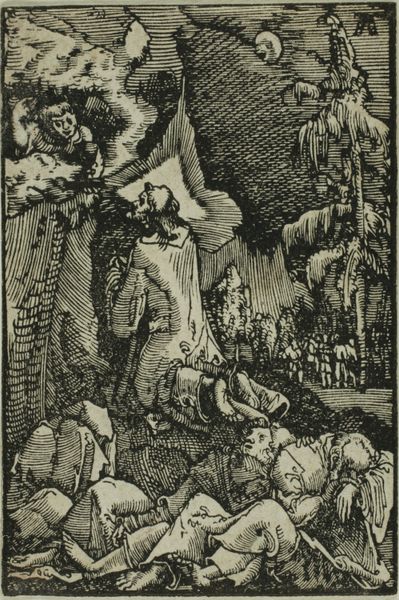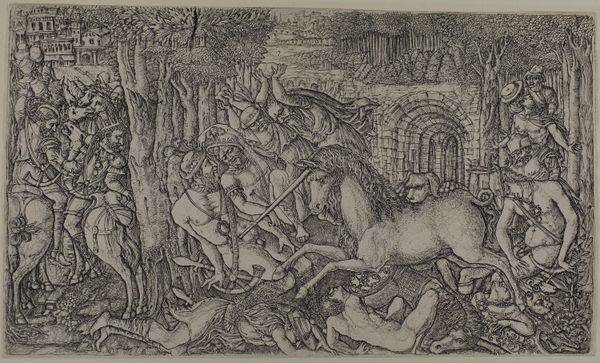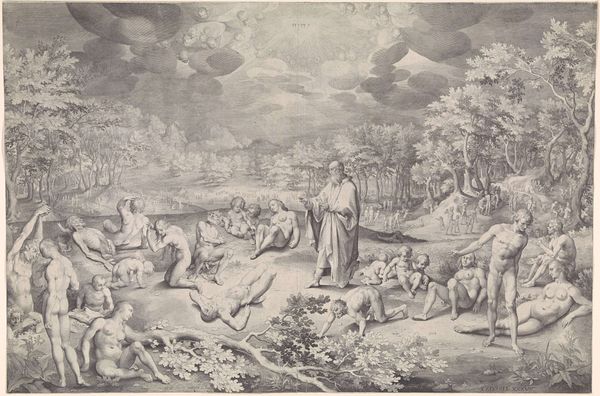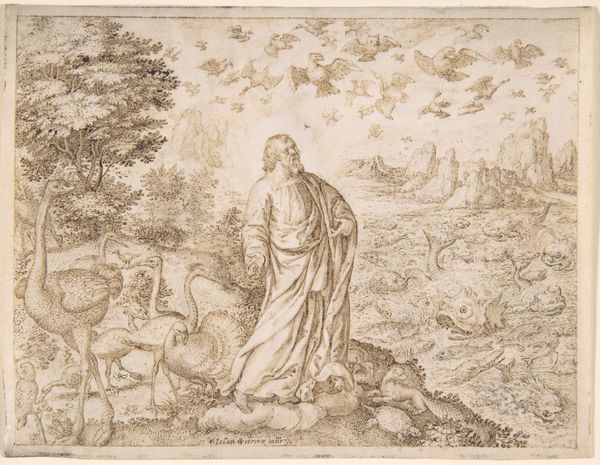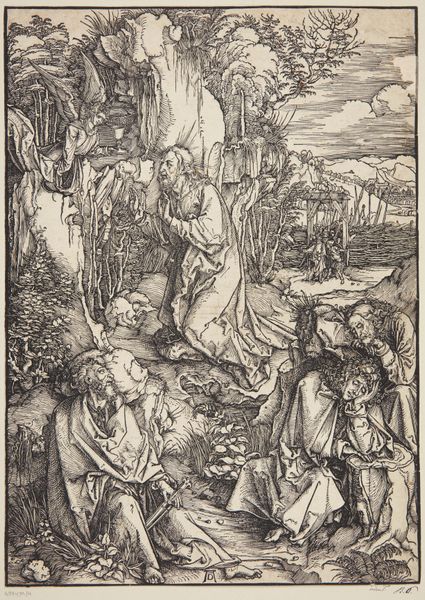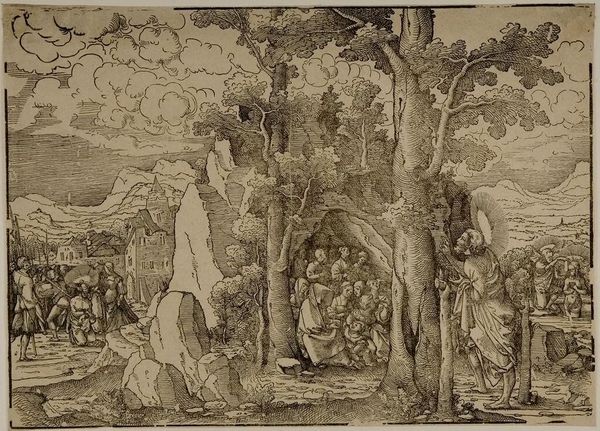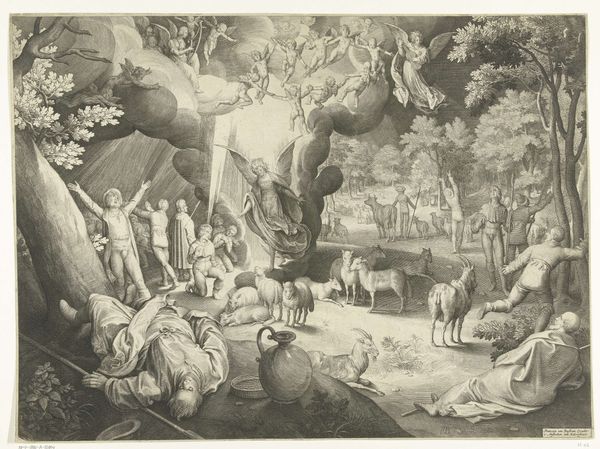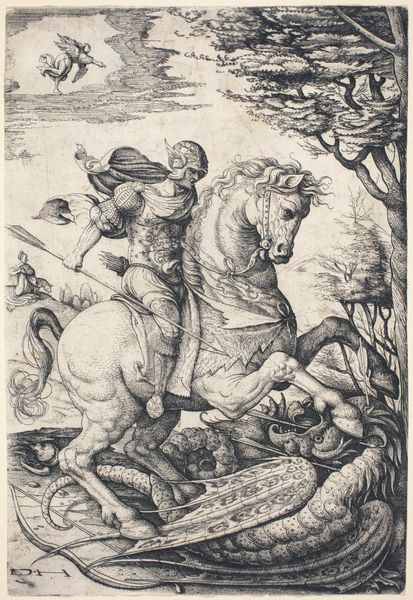
panel, tempera, painting, oil-paint
#
panel
#
narrative-art
#
tempera
#
painting
#
oil-paint
#
landscape
#
figuration
#
oil painting
#
expressionism
Copyright: Public Domain: Artvee
Editor: We're looking at Egon Schiele’s "The Vision of Saint Hubertus," painted in 1916 with tempera and oil on panel. The composition really strikes me – there’s this kind of rough, almost raw texture to the landscape and figures, but it lends a feeling of authenticity and depth to the narrative. What visual cues stand out to you? Curator: Formally, consider the juxtaposition of rough and smooth textures. Schiele employs a frenetic, almost brutal application of paint to the geological formations, countered by the ethereal rendering of the stag and the flatness of the background. This contrasting handling of the materials evokes tension. Note the high horizon line, too, creating a flattened perspective and emphasizing the picture plane. Do you see how the limited color palette works to unify these disparate elements? Editor: Yes, the browns and greens dominate. The luminous stag and the light sky serve as contrast, drawing your eye through the composition. Could this limited palette indicate any of the philosophies of expressionism? Curator: Precisely. Observe how Schiele exploits line and color not for mimetic purposes but rather as conveyors of subjective emotion. The harsh, angular lines defining the rocks create a sense of unease, while the cool palette perhaps suggests a somber contemplation. The painting then becomes a window into the artist’s, and perhaps Saint Hubertus’s, psychological landscape. Editor: I see it now – the contrast isn't just visual, it’s emotional as well. Curator: Precisely. This piece demonstrates how Schiele bends formal elements like line, color, and texture toward conveying an internalized and emotionally potent narrative. Editor: That tension makes so much more sense now. It's been helpful to consider Schiele’s choice of colour. Curator: Indeed, sometimes a purely visual analysis allows one to unlock greater depths.
Comments
No comments
Be the first to comment and join the conversation on the ultimate creative platform.
